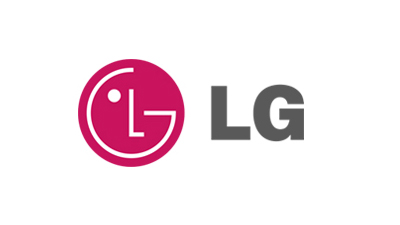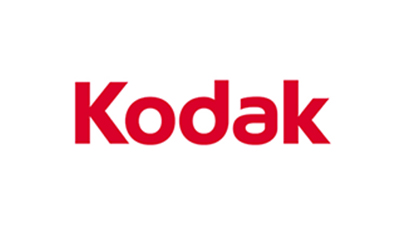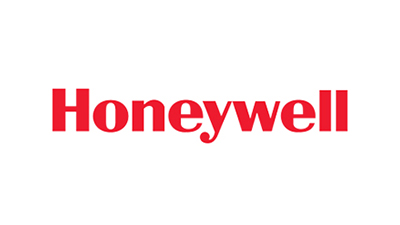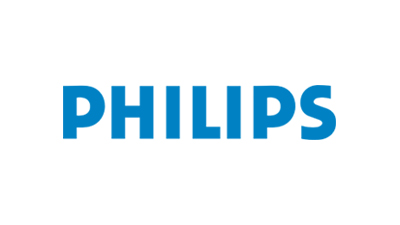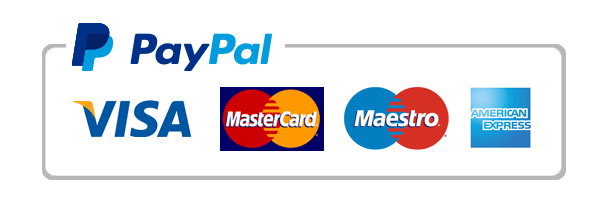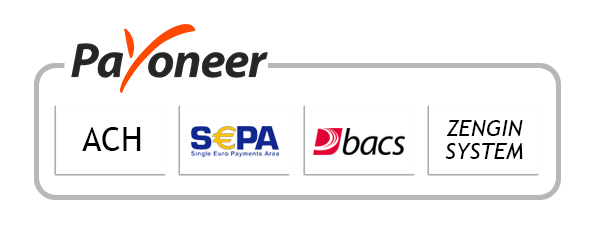
-
Report ID 138298 -
Published Date September 2024 -
Delivery Format PDF/PPT/Word -
Editor's Rating
-
Report Details
Report Overview
The worldwide EdTech Market is projected to grow significantly from USD 146.5 billion in 2023 to an estimated USD 549.6 billion by 2033. This represents a compound annual growth rate (CAGR) of 14.4% from 2024 to 2033.
Educational Technology, also know as EdTech, represents the intersection of technology and educational practices aimed at enhancing learning experiences. EdTech encompasses a broad range of services and tools, from virtual classrooms and online learning platforms to AI-driven tutoring systems and interactive learning apps.By leveraging technology, educators can personalize learning, assess progress in real time, and provide a richer educational experience to students.
The demand for EdTech has surged significantly and is driven by the need for scalable, flexible learning solutions that can serve diverse educational needs. Schools, universities, and professional training programs are increasingly relying on digital solutions to bridge learning gaps and expand their reach. Additionally, there is a growing demand from learners for technologies that support lifelong learning and skill development in a rapidly changing job market.
The EdTech market has witnessed robust growth over the past few years, with projections suggesting continued expansion. This growth is fueled by technological advancements such as artificial intelligence, machine learning, and cloud computing. These technologies have enhanced the capabilities of EdTech offerings, making them more interactive and personalized. The rise of mobile technology and improved internet accessibility worldwide also contribute to the expansion of the EdTech market, enabling more users to access educational content from anywhere at any time.
The EdTech sector presents numerous opportunities for innovation and development. There is a significant potential for growth in areas like gamification or game-design elements in educational content. Another major opportunity lies in the utilization of big data analytics to improve learning outcomes by analyzing student performance and tailoring educational strategies accordingly. Additionally, as the focus on lifelong learning and continuous professional development intensifies, there is a growing market for platforms that cater to adult learners and professionals seeking to enhance their skills outside traditional educational settings.
Government Initiatives Supporting Edtech in USA
According to the Labster report, the American Rescue Plan (ARP) Act established the ESSER III fund, amounting to approximately $122 billion, to support K-12 education. This fund allows states and school districts to purchase educational technology (EdTech) products and also offers reimbursements for purchases dating back to the onset of pandemic-induced distance learning.
The ARP Act also set up the $39.6 billion Higher Education Emergency Relief Fund III (HEERF III) to provide emergency grants to higher education institutions across the United States. This fund is accessible to over 5,000 colleges and universities, allocating $18 billion specifically to both public and private higher education institutions, including $10 billion earmarked for community colleges.
Key Takeaways
- The global EdTech market is expected to expand markedly, rising from USD 146.5 billion in 2023 to approximately USD 549.6 billion by 2033. This growth translates to a compound annual growth rate (CAGR) of 14.4% over the forecast period from 2024 to 2033.
- The Hardware segment, which includes interactive displays, tablets, laptops, and more, is experiencing robust growth. It is expected to account for approximately 60% of the revenue share in 2023. This growth is indicative of the increasing adoption of technology-driven teaching methodologies globally.
- Dominating the EdTech market, the K-12 sector holds a significant market share of 40% in 2023. This reflects the expanding use of digital tools and interactive learning platforms in primary and secondary education.
- Cloud-based solutions are leading the market, with a substantial market share of 71.2% in 2023. Their scalability and accessibility are key drivers, especially in supporting remote and hybrid learning models.
- North America leads the global EdTech market, holding a revenue share of 36.5% in 2023, propelled by substantial investments in educational technology. The Asia Pacific region is projected to experience the highest Compound Annual Growth Rate (CAGR) during the forecast period, spurred by increasing adoption of smart devices and enhanced computing infrastructure.
By Type Analysis
The global EdTech market is segmented into three primary categories such as hardware, software and services. Each of these segments plays a crucial role in the ecosystem of educational technology, but it is the hardware segment that has shown a dominant performance. In 2023, the hardware sector accounted for the largest market share, and it is poised to experience the fastest growth rate during the forecast period.
Hardware in EdTech includes essential tools such as interactive displays, tablets, laptops, and secure digital (SD) cards. In 2023, hardware products are expected to capture around 60% of the total revenue share in the global EdTech market. This substantial share underscores the critical dependency of educational institutions on physical tech solutions to facilitate modern teaching methodologies and learning experiences.
The growth in the hardware segment is driven by several factors like the ongoing digital transformation in education necessitates robust infrastructure, which is fulfilled by high-quality hardware. Also, the increasing adoption of hybrid learning models, which blend traditional classroom settings with online education, demands more interactive and versatile hardware solutions. Further, governmental and institutional investments in upgrading educational technology, as seen with funding initiatives like the American Rescue Plan, further stimulate the demand for hardware in the education sector.
By Sector Analysis
In the sector analysis of the global EdTech market, the K-12 segment stands out as a significant area of dominance. For 2023, this segment is projected to hold a substantial 40% of the market share. This strong performance highlights the critical role that educational technology is playing in primary and secondary education environments.
The K-12 sector’s embrace of EdTech reflects a broader trend toward integrating digital tools and platforms into the classroom to enhance the learning process. This includes the use of interactive software and digital content that align with curriculum standards and improve student engagement and understanding. The adoption is driven by educational benefits as well as the necessity of maintaining continuity in learning amidst challenges such as school closures during the pandemic.
Moreover, the growth in the K-12 EdTech market is supported by increased funding from both government initiatives and private investments. Policies like the American Rescue Plan have significantly contributed to this sector by providing financial support for schools to adopt and integrate new technologies. This influx of capital has allowed schools to upgrade their technological infrastructure, ensuring that students have access to the latest educational resources.
As technology evolves and becomes more embedded in educational practices, K-12 institutions are likely to invest further in EdTech solutions that promise more personalized, adaptive, and inclusive educational experiences. This ongoing evolution points to a sustained growth and influence of the K-12 segment within the broader EdTech landscape, underlining its essential role in shaping future educational paradigms.
By Deployment Analysis
The global EdTech market has seen remarkable growth, with the deployment segment playing a pivotal role in defining the industry’s trajectory. Notably, the cloud deployment segment has emerged as the dominant force, capturing an impressive 71.2% market share in 2023. This dominance is indicative of the growing preference among educational institutions for cloud-based solutions, which offer greater flexibility, scalability, and cost-efficiency compared to traditional models.
Cloud deployment in EdTech enables institutions to leverage robust infrastructure without the need for heavy initial investments in hardware. This model supports a range of applications from data storage and management to student information systems and learning management systems, all accessible remotely. The scalability of cloud solutions allows schools to easily adjust resources based on their current needs and student numbers, which is particularly advantageous for fluctuating school populations and remote learning scenarios.
Despite the increasing preference for cloud-based solutions, on-premises deployment still holds relevance, especially in regions with stringent data protection laws or where internet connectivity is unreliable. On-premises solutions provide institutions with full control over their IT environment and data, leading to enhanced security perceptions. However, this comes at the cost of increased responsibility for maintenance, updates, and compliance with evolving technology standards, proving a significant burden for educational institutions.
Cloud technologies are becoming more sophisticated, offering enhanced security features that can address the concerns traditionally associated with cloud computing. Additionally, as more educational tools and content are developed with cloud-first approaches, the incentives for institutions to adopt cloud solutions will only increase, further cementing the dominance of the cloud segment in the EdTech market.
By End-User Analysis
The global EdTech market is experiencing rapid expansion, driven by various end-user segments that are reshaping the way education is delivered and consumed. Among these, the Consumer segment has proven to be a dominant force, leading the market with the largest share. In 2023, the Consumer segment alone captured an impressive 70% of the total market, underscoring its significance in the broader EdTech ecosystem.
This significant market share is attributed to the increasing demand for online learning platforms, educational apps, and digital content tailored for individual learners. Consumers, including students, parents, and lifelong learners, are increasingly seeking flexible, accessible, and personalized educational experiences. The rise of self-paced learning, gamified educational tools, and mobile learning apps has further fueled the growth of this segment.
In contrast, the Business segment, while also experiencing growth, caters primarily to corporate training and professional development. Businesses are leveraging EdTech solutions to upskill their workforce, adapt to digital transformation, and maintain a competitive edge in the marketplace. Although the Business segment is expanding, its market share remains lower than that of the Consumer segment, reflecting the broader adoption of EdTech by individual users.
EdTech Tools and Applications
- AI-Powered Tutoring Systems: AI-driven platforms like Squirrel AI and Century Tech use artificial intelligence to provide personalized tutoring. These systems adapt to each student’s learning style and pace, offering tailored content and feedback.
- Online Collaboration Tools: Platforms such as Google Classroom and Microsoft Teams enable students and teachers to collaborate in real-time. These tools support group projects, discussions, and the sharing of resources, fostering a connected and interactive learning environment.
- Interactive Whiteboards: Tools like SMART Boards and Promethean Boards allow for dynamic, interactive lessons where teachers can integrate multimedia content, draw, and annotate in real-time. This technology engages students and supports collaborative learning.
- Learning Management Systems (LMS): LMS platforms like Moodle and Canvas provide educators with a comprehensive system to deliver, track, and manage online courses. These systems are essential for organizing course content, assessing student progress, and facilitating communication between students and teachers.
- Educational Apps: Applications such as Duolingo for language learning and Khan Academy for a wide range of subjects provide personalized, on-demand educational content. These apps often use gamification to make learning more engaging and accessible to users of all ages.
Key Market Segments
By Type
- Hardware
- Software
- Content
By Sector
- Preschool
- K-12
- Higher Education
- Other Sectors
By Deployment
- Cloud
- On-Premises
By End User
- Business
- Consumer
- Other End-Users
Market Dynamics
Driver: Growing Adoption of eLearning Solutions
The rapid adoption of eLearning solutions is a significant driver of the EdTech market. The global shift towards digital education has fundamentally changed how educational content is delivered and consumed. The demand for online learning platforms, virtual classrooms, and digital assessment tools has surged as educational institutions, businesses, and learners alike seek flexible and accessible learning solutions.
One of the primary factors driving this adoption is the increased accessibility and convenience offered by eLearning platforms. Students can access a wide range of courses and educational materials from anywhere, at any time, which is particularly beneficial for those in remote areas or with busy schedules.
Additionally, eLearning solutions often provide a personalized learning experience, allowing students to progress at their own pace and focus on areas where they need the most improvement. This tailored approach not only enhances the learning experience but also improves outcomes, making digital education an attractive option for learners of all ages.
Moreover, the integration of advanced technologies such as artificial intelligence (AI) and machine learning (ML) in eLearning platforms is further driving market growth. These technologies enable the creation of adaptive learning systems that can adjust content delivery based on a student’s performance and learning style. This personalized approach not only increases student engagement but also improves knowledge retention, making eLearning a more effective alternative to traditional educational methods.
Restraint: Cybersecurity Risks
One of the primary restraints in the global EdTech market is the increasing concern over cybersecurity risks. As educational institutions and learners increasingly depend on digital platforms and cloud-based solutions, the exposure to potential cybersecurity threats also escalates. These risks range from data breaches and unauthorized access to sensitive information to the disruption of learning processes through ransomware attacks.
The susceptibility to cyber threats is significant in the EdTech sector due to the vast amounts of personal data processed by educational technologies, including student performance data, personal identification information, and financial details. The challenge is compounded by the varying levels of security readiness among institutions, with many lacking robust cybersecurity measures and protocols. This gap not only threatens the privacy and security of individuals but also undermines trust in digital education platforms.
Addressing these cybersecurity challenges requires a concerted effort from EdTech providers and educational institutions. They must implement comprehensive security measures, regular security audits, and continuous updates to their systems and protocols to protect against evolving threats. Furthermore, there is a need for ongoing education and training for both educators and students on cybersecurity best practices.
Opportunity: Expansion of Hybrid Learning Models
The expansion of hybrid learning models presents a significant opportunity in the EdTech market. Hybrid learning, which combines traditional in-person instruction with online educational tools, has gained momentum as educational institutions seek to offer flexible learning environments that cater to diverse student needs.
One of the key advantages of hybrid learning is its ability to provide a more personalized and engaging educational experience. Students can benefit from the structured environment of a physical classroom while also accessing digital resources that enhance their learning. For example, educators can use online platforms to offer supplemental materials, interactive quizzes, and virtual labs, allowing students to deepen their understanding of the subject matter at their own pace. This blended approach not only caters to different learning styles but also helps students who may need additional support outside of classroom hours.
Furthermore, hybrid learning models are particularly appealing in the context of higher education and corporate training. Universities and businesses are increasingly adopting hybrid models to provide flexible learning options for students and employees who may be balancing education or training with work and other responsibilities. This flexibility is particularly important in a globalized world, where learners are often spread across different time zones and locations. By offering hybrid learning options, institutions can attract a broader audience and meet the needs of a more diverse student body.
Challenge: High Cost of Producing eLearning Content
One of the most significant challenges facing the EdTech market is the high cost of producing high-quality eLearning content. Developing engaging and effective digital educational materials requires a substantial investment in time, resources, and expertise. This challenge is particularly pronounced for smaller EdTech companies and educational institutions with limited budgets.
Creating eLearning content that is both educational and engaging involves a multidisciplinary approach. Instructional designers, subject matter experts, multimedia developers, and software engineers must work together to create content that not only covers the educational material but also does so in an interactive and visually appealing manner. This process often includes the development of animations, videos, interactive quizzes, and simulations, all of which require specialized skills, tools and high costs.
Emerging Trends
- Growth of Microlearning Platforms: Microlearning platforms that offer short, focused learning sessions are becoming popular, especially for professional development and skill enhancement. These platforms cater to the growing need for continuous education and are suited for mobile learning.
- Integration of AI and ML: AI and ML technologies are increasingly being integrated into educational software to personalize learning experiences, adapt content to individual student needs, and automate administrative tasks. This helps in predicting student performance and providing tailored support.
- Rise of Virtual and Augmented Reality (VR/AR): VR and AR are transforming the traditional learning environments by providing immersive learning experiences. For example, VR can simulate historical events or scientific phenomena, making learning more engaging and interactive.
- Blockchain for Education: Blockchain technology is being explored for its potential to secure and verify educational credentials and to create tamper-proof student records. This can facilitate the seamless transfer of credits and recognition of qualifications globally.
- Increase in Gamification: Gamification in education is on the rise to boost student engagement, motivation, and retention rates. By turning learning into a game-like experience, educators can make learning more appealing and memorable.
Top Use Cases for EdTech Market
- Remote Learning Solutions: With the rise of remote and hybrid learning environments, EdTech tools are crucial for delivering education outside traditional classrooms. Platforms like Zoom, Google Classroom, and Microsoft Teams have become standard for delivering lectures and managing assignments.
- Online Skill Development Courses: Platforms like Coursera, Udemy, and LinkedIn Learning offer courses that help individuals develop new skills or enhance existing ones. These are widely used by professionals looking to advance their careers through continuous learning.
- Language Learning Applications: Apps like Duolingo, Babbel, and Rosetta Stone use interactive tools and techniques to facilitate language learning, catering to a global audience seeking to learn new languages for personal or professional reasons.
- Adaptive Learning Technologies: These technologies adjust the type of content and the pace of learning based on the learner’s performance. Tools like DreamBox Learning and Smart Sparrow provide adaptive learning paths that are customized to each student’s strengths and weaknesses.
- Educational Games and Simulations: EdTech also includes educational games and simulations that help students understand complex concepts in subjects like mathematics, science, and engineering in an engaging and applied setting.
Regional Analysis
In 2023, North America held a commanding position in the EdTech market, accounting for a 36.5% share of global revenue. This dominance is reflected in the substantial revenue figures reported from the region, with the EdTech sector generating US$ 53.2 billion. The robust market presence in North America is attributed to factors like including widespread adoption of technology in educational institutions, significant investments in digital learning from both private and public sectors, and a strong culture of innovation that drives continuous improvements in educational technologies.
For instance, Class Technologies Inc., an innovative EdTech platform tailored for K-12 and higher education sectors, secured a significant investment of approximately USD 105 million in Series B funding back in July 2021. This substantial financial injection has enabled them to expand their international footprint and ensure they have the necessary resources to support universities in continuing education for students impacted by the pandemic.
The region’s leadership in the EdTech sector is also bolstered by the integration of advanced technologies such as AI, VR, and cloud-based solutions into everyday learning environments. Schools, universities, and corporate training programs across North America are increasingly relying on these technologies to provide enhanced educational experiences that are accessible, scalable, and customizable.
Looking forward, the outlook for the EdTech market in North America remains highly optimistic. The ongoing digital transformation in education, combined with increasing investments in EdTech startups and new technology deployments across educational institutions, predicts significant growth. This growth is expected to continue as more educational entities seek to innovate and improve the efficiency and effectiveness of learning through technology.
Meanwhile, the Asia Pacific region is poised for rapid growth in the EdTech sector. It is expected to experience the highest Compound Annual Growth Rate (CAGR) during the forecast period. This growth is driven by increasing digitalization, government initiatives to promote e-learning, and a burgeoning youth population seeking educational opportunities.
Key Regions and Countries Covered in this Report:
- North America
- The US
- Canada
- Europe
- Germany
- France
- The UK
- Spain
- Italy
- Russia
- Netherland
- Rest of Europe
- APAC
- China
- Japan
- South Korea
- India
- New Zealand
- Singapore
- Thailand
- Vietnam
- Rest of Asia Pacific
- Latin America
- Brazil
- Mexico
- Rest of Latin America
- Middle East & Africa
- South Africa
- Saudi Arabia
- UAE
- Rest of MEA
Key Players Analysis
The global EdTech market thrives on the contributions of key players who are at the forefront of driving innovation, shaping new educational methodologies, and significantly influencing the sector’s growth. Among the key players in the global EdTech market, a few notable ones include Coursera Inc., 2U Inc., Amazon Inc.,etc. These companies are leading the charge in innovation, shaping how education is delivered and accessed around the world.
Coursera Inc. is a leading player in the EdTech sector, known for offering a wide range of online courses from top universities and companies globally. They provide learning opportunities across various disciplines, making education accessible to anyone with an internet connection. Coursera’s platform is celebrated for its user-friendly interface and a diverse array of courses, making it a popular choice for learners seeking to enhance their skills or pursue new knowledge areas.
2U Inc. specializes in providing online degree programs and professional development courses in partnership with major universities. Their approach combines the prestige of traditional education with the flexibility of online learning. 2U’s commitment to high-quality content and immersive learning experiences has positioned them as a key figure in transforming higher education by making it more accessible and relevant in today’s digital age.
Amazon Inc., while primarily known as an e-commerce giant, has also ventured into the EdTech space with Amazon Web Services (AWS) educational technologies and initiatives like AWS Educate. This program offers resources for students and educators to learn about cloud computing and related technologies, aiming to prepare them for the tech-centric job market. Amazon’s massive scale and technological prowess enable it to be a significant force in pushing educational boundaries through technology.
Blackboard Inc. is another major player in the EdTech market, primarily focused on providing educational institutions with learning management systems (LMS) and virtual learning environments. Blackboard’s tools are designed to enhance the educational experience by facilitating communication, collaboration, and access to course materials, thus supporting a seamless transition between in-person and online education environments. Their continued innovation in educational technology makes them a stalwart in supporting academic institutions around the world.
Top Market Leaders
- Coursera Inc.
- BYJU’S
- Chegg Inc.
- 2U Inc.
- Amazon Inc.
- Blackboard Inc.
- Edutech
- Google LLC
- edX Inc.
- Instructure, Inc.
- Udacity, Inc.
- upGrad Education Private Limited
- Other Key Players.
Recent Developments
- January 2023: Chegg Inc. expanded its career-oriented learning services by acquiring “Thinkful,” a coding bootcamp provider. Additionally, in March 2023, Chegg launched “Chegg Mathway Expert Q&A,” a new feature aimed at enhancing its academic support services
- March 2023: Instructure completed the acquisition of LearnPlatform, a company specializing in evaluating and managing digital learning tools. This move strengthens Instructure’s commitment to building a more comprehensive education platform by adding evidence-based insights into their offerings.
- February 2024: 2U Inc., the parent company of edX, expanded its offerings by launching new courses in partnership with institutions like Harvard, MIT, and UC Berkeley. This initiative is part of 2U’s broader strategy to provide affordable, high-quality education through the edX platform
- March 2024: Accenture announced the acquisition of Udacity, a leader in digital education known for its technology courses. This acquisition aims to enhance Accenture’s ability to reskill and upskill their clients’ workforce, particularly in areas like AI, data, and technology
- July 2024: Instructure Holdings Inc. , known for its Canvas learning management system, announced its acquisition by investment funds managed by KKR. This deal, valued at approximately $4.8 billion, will see Instructure becoming a privately held company. The acquisition is expected to help Instructure enhance its global learning platform and achieve significant growth.
-
Table Of Content
Research Insights & Deliverables
 Development and Future Forecast
Development and Future Forecast Competitive benchmarking
Competitive benchmarking Company Revenue Statistics
Company Revenue Statistics Rising Regional Opportunities
Rising Regional Opportunities Technology Trends and Dynamics
Technology Trends and Dynamics Technology Assessment
Technology Assessment
-
Inquiry Before Buying
Research Insights & Deliverables
 Development and Future Forecast
Development and Future Forecast Competitive benchmarking
Competitive benchmarking Company Revenue Statistics
Company Revenue Statistics Rising Regional Opportunities
Rising Regional Opportunities Technology Trends and Dynamics
Technology Trends and Dynamics Technology Assessment
Technology Assessment
-
Request Sample
Research Insights & Deliverables
 Development and Future Forecast
Development and Future Forecast Competitive benchmarking
Competitive benchmarking Company Revenue Statistics
Company Revenue Statistics Rising Regional Opportunities
Rising Regional Opportunities Technology Trends and Dynamics
Technology Trends and Dynamics Technology Assessment
Technology Assessment
